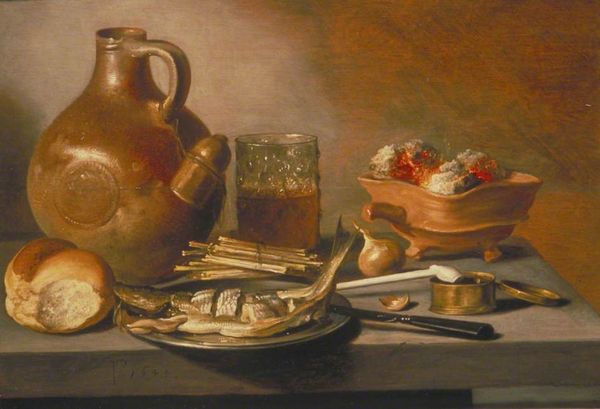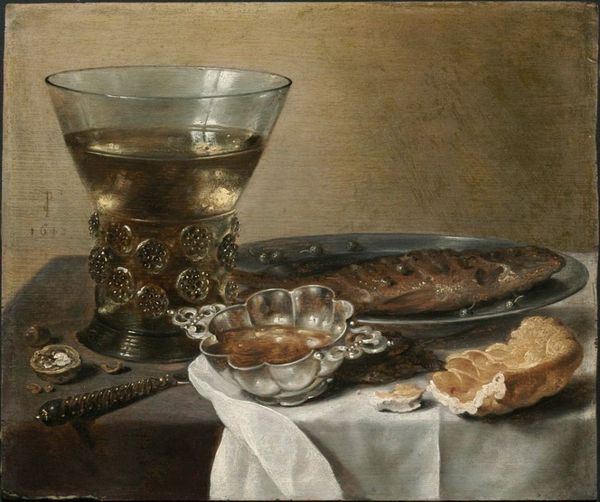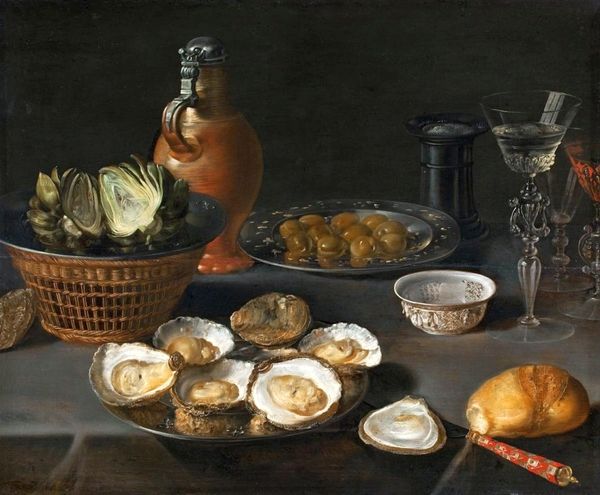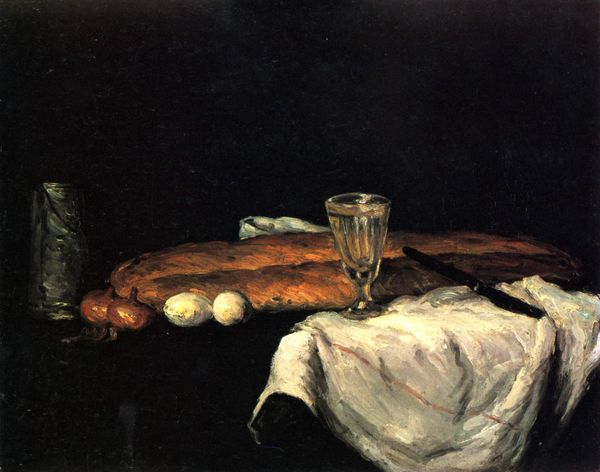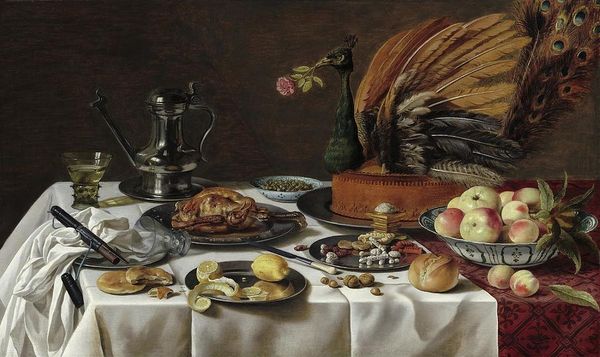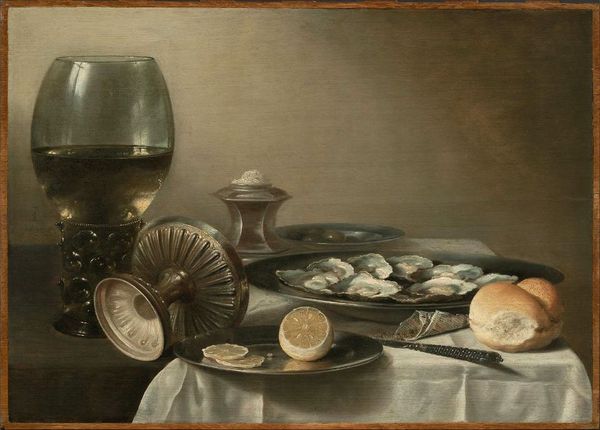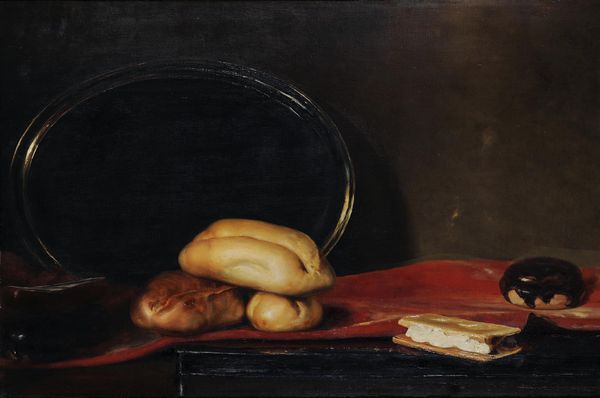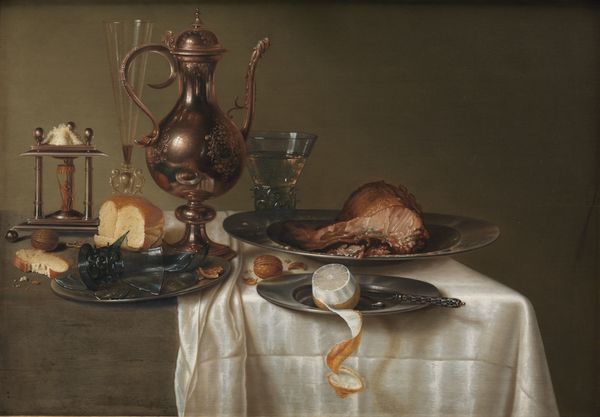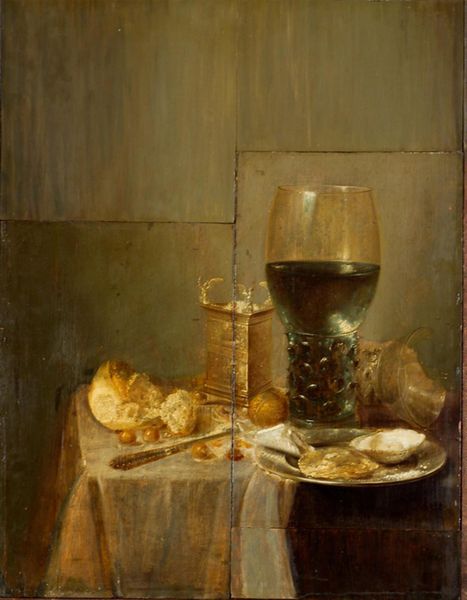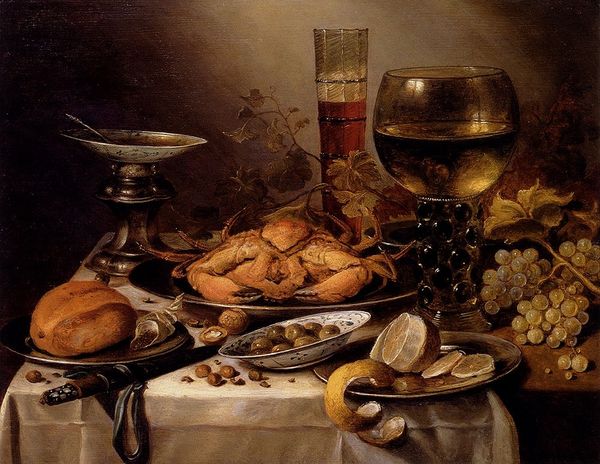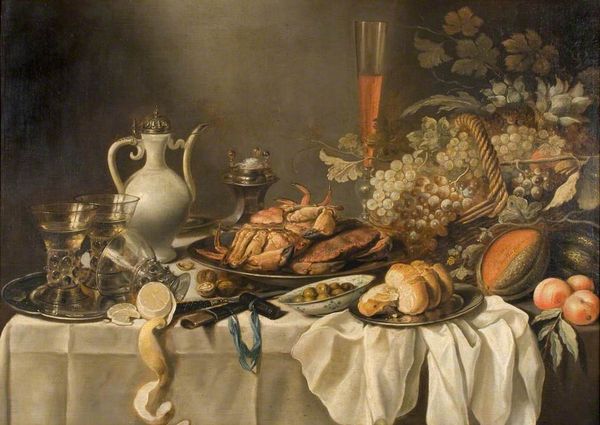
painting, oil-paint
#
baroque
#
dutch-golden-age
#
painting
#
oil-paint
#
oil painting
Copyright: Public domain
Curator: Welcome. Here we have Pieter Claesz's "Still Life with Herring," a sumptuous oil painting created in 1636. What strikes you most immediately? Editor: That interplay of light across varied surfaces—glass, metal, cloth. There's something almost theatrical about it. It draws my eye directly to the gleaming herring, evoking notions of maritime abundance and perhaps the inherent ephemerality of earthly delights. Curator: Indeed. The composition adheres to a distinct formal arrangement, guiding the eye systematically. Note how the monochromatic palette contributes to the unity of the objects, unified by light and form. Editor: But aren’t these also incredibly specific, identifiable objects? Herring carried significant cultural weight in the 17th century Netherlands. The depiction isn't just about formal beauty; it taps into the deep symbolism of sustenance and prosperity within Dutch society at that time. Curator: Agreed. The diagonal emphasis of the table cloth adds to the implied movement and inherent dynamism of the objects portrayed. However, what truly intrigues me is Claesz's use of textures: the smoothness of glass in contrast to the bread's subtle crumples. Editor: Absolutely. And the nearly imperceptible fly depicted within the scene can perhaps be read as a poignant "memento mori" device, functioning to subtly remind the viewer of the temporary, decomposing character of beauty and the eventual transition to a realm of perpetual stillness. Curator: That is insightful; thank you. Ultimately, this painting encourages us to ponder what draws us in: precise renderings of objects or what the object means beyond mere likeness? Editor: In the end, Claesz's artistic decision can make us contemplate life and decay. He delivers something to viewers far beyond this Dutch master's visual mastery of paint.
Comments
No comments
Be the first to comment and join the conversation on the ultimate creative platform.

